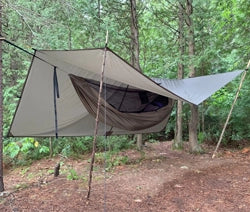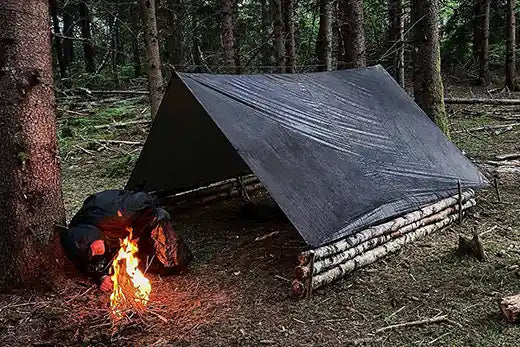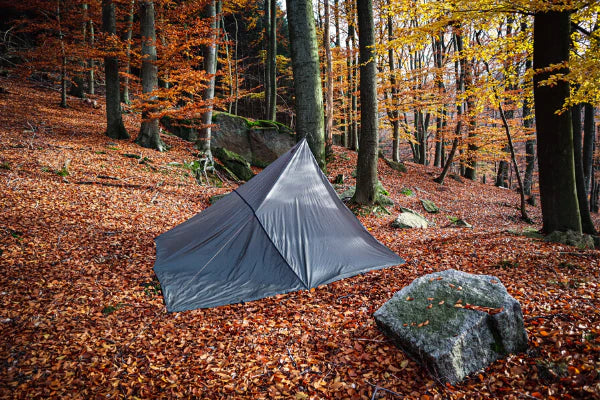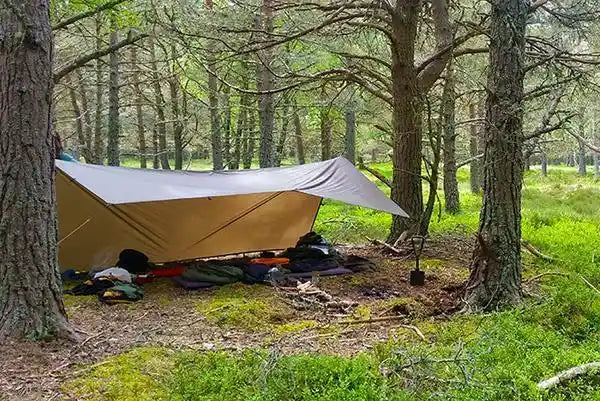Mastering the A-Frame Tarp Setup
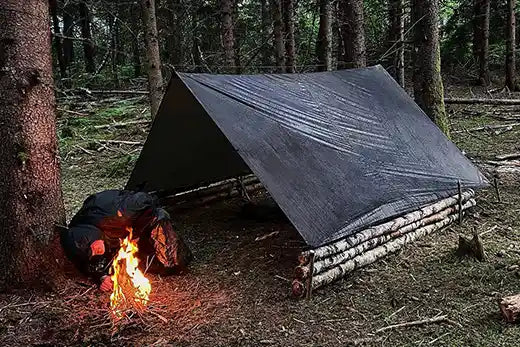
Mastering the A-Frame Tarp Setup
The A-frame tarp pitch is one of the most popular and versatile tarp configurations. This setup is easy to accomplish and provides good protection from the elements, making it a useful shelter option for hikers, backpackers, and bushcrafters.
The minimum gear you will need is:
- AquaQuest Safari Lightweight Tarp
- Guy line, paracord, or other sturdy rope/AquaQuest Boa Straps
- 4 Pegs/Steaks
SETTING UP
1. Choose your location: Find a location with two trees or other sturdy anchor points that provide you with the required space to position your tarp footprint and suspend your ridgeline. For example, if using a 10' x 10' tarp, you will need a minimum of around 12 feet of space between the two trunks. Greater distances are also viable but require longer cordage. Make sure the ground area is level and free from any sharp objects or debris.
2. Set up your ridgeline: Tie one end of a length of cord to your first anchor point at your preferred height: This will approximately set the maximum height of your A-Frame. String the loose end of the cord through the tie-loops that will constitute the ridge of your shelter (across the x or y axis of your tarp). Secure the remaining end to the second anchor point, ensuring that the ridgeline is taut and level.
3. Tension the tarp on the ridgeline: Affix small loops of cord to the tarp tie outs at the front and back edge of the ridge, then attach these loops to the ridgeline using a prussic knot or other friction hitch. Slide the tarp to the preferred location along the line and then tension the knots so that the fabric of the tarp's axis is fully extended under the ridgeline.
4. Stake out the corners: Use stakes or pegs to secure the corners of the tarp to the ground. If your ridgeline is set high, the corner tie-outs won't contact the ground and you will need to affix cord to each corner and stake out these extension lines instead. Make sure the tarp is taut and level once all anchors have been set.
5. Adjust for weather conditions: Depending on the weather, you may need to adjust your tarp setup. For example, if it's raining, you may want to lower the sides of the tarp to provide more coverage. If it's windy, you may want to use additional guy lines to secure the tarp and prevent it from flapping in the wind.
BENEFITS OF THE A-FRAME TARP SETUP
- Easy to set up: The A-frame tarp setup is straightforward and can be completed quickly.
- Versatile: The A-frame tarp setup can be adjusted to suit a variety of weather conditions, making it a versatile shelter option.
- Lightweight: The A-frame tarp setup requires minimal equipment and is lightweight, making it an ideal shelter for backpackers and hikers.
CONCLUSION
The A-frame tarp setup is a versatile and easy-to-set-up shelter option for campers, hikers, backpackers and bushcrafters. With a little practice, you can master this configuration and be prepared for any weather conditions on your next outdoor adventure.
The A-frame tarp setup is a versatile and easy-to-set-up shelter option for campers, hikers, backpackers and bushcrafters. With a little practice, you can master this configuration and be prepared for any weather conditions on your next outdoor adventure.
